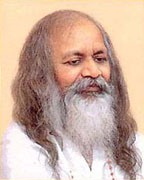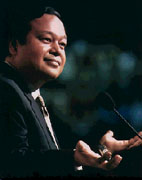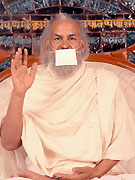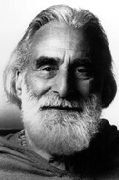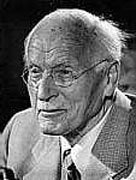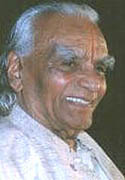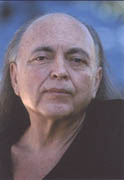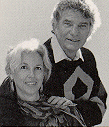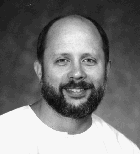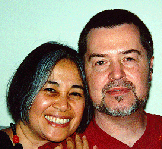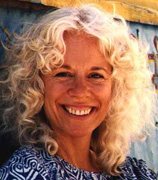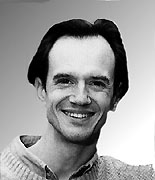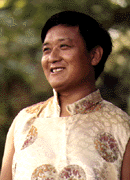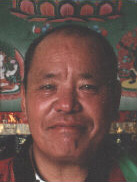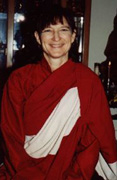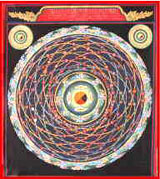|
Writings |
|
Influential Teachers |
|
|
My Spiritual History
A Chronological Listing and Description
of Influential Teachers, Teachings and Practices
|
|
LSD and Other Hallucinogens (1972) I am a child of the sixties, and certainly I did my share of drugs. But when I did my first LSD trip, I learned something about the constriction of the ordinary state of mind in myself, and discovered the multi-dimensional capacity of the mind. In the year that I tripped, I went through some very intense changes. Drugs, particularly LSD, worked at energetically opening me up, paving the way for more grounded spiritual work in the future. |
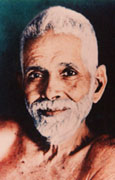
|
Ramana Maharshi(1972)
Ramana Maharshi was instrumental in my initiation into spiritual life at the age of 18.
Even though I didn't connect with Advaita Vedanta until two decades later, simply reading the story of a woman meeting with Ramana was so mind-blowing to me that it changed the course of my life, and triggered my spiritual career. Click on here to go to the essay of my story of finding a book about Ramana in a bar in Buffalo, NY in 1974, as well as a remarkable story of a woman destined to be touched by the immense spiritual stature of, in my opinion, one of the greatest individuals of the 20th century.
|
|
|
Transcendental Meditation (1973) My first attempt at real meditation! I was initiated into the TM experience in 1974, receiving my mantra for the low, low student price of $35.00. Little did I know that the TM mantras were given out en masse, and mantra selection was based on age! If you were initiated at the same age as me, you probably have the same mantra. In any case, the initiation was exciting and it sure looked real "Hindu"-like to me, even though it was supposed to be non-religious. Who was this Guru Dev guy in the picture? The mantra felt awkward at first, but it did get me to wet my toes in spiritual waters. My mantra? Here's a hint: it turns out to be the names of one of the other teachers in this list! |
|
|
Guru Maharaji, Divine Light Mission, and "Knowledge" (1974)
My involvement with Guru Maharaji and his practice form, known as Knowledge, consumed ten years of my life. I was introduced to Maharaji through a Public Television documentary on the 1973 Millenium Festival in the Houston Astrodome. Seeing one person on the video, whom I eventually befriended, laughing in a state of bliss really struck me that something powerful was going on there. I took a leap of faith, entering my first nightly "satsang" gathering, and proceeded to get totally drunk in bliss, which was an astounding experience to me at the time. Within two months, I was inititated into Knowledge on January 28, 1995 in a little room in Toronto Canada. The practice of Knowledge involved 4 practices: Satsang: Every night of the week, devotees would gather, and people were given
the opportunity, one by one, to sit in the satsang chair, and speak their truth. It
was awkward at first for me, but very often, something would take over, and I felt
like I was being talked, being used by a spiritual force, which was very blissful. I
loved satsang, as the combination of individuals would intensify the shakti force,
which would be very heart opening, joyful and happy. Satsang would end with a
devotional song to Guru Maharaji, called "Arati". Service: People would be required to serve in some capacity as part of their practice, a 'la Karma Yoga. All I really wanted to do was meditate a lot and go to satsang, but service really helped me to connect with the other devotees in my community. Darshan: Loosely meaning, "divine sighting", darshan was the experience of being in the physical company of Guru Maharaji, most often at festivals held at various special times throughout the year, and throughout the world. The Guru-devotee relationship first made me very uncomfortable, but at one point in February 1977, at a festival in Denver, I went through a remarkable heart-conversion, and simply fell in love with Maharaji. After that point, my spiritual process took off, and I moved into an ashram. I saw Maharaji numerous times in my life, at festivals ranging from 1000 to 20,000 people, in America and Europe. These were truly amazing events, in terms of magnitude and organization. The highlight was the darshan line, going up in front of Maharaji, in a single file, which would take sometimes an entire day to finish. Meditation: The meditation was based on a Raja Yoga system of concentration, and
very, very similar to the techniques of meditation of Kriya Yoga in the Self Realization
Fellowship of Yogananda. The four techniques were:
|
|
|
Jainism: Muni Sushil Kumar (1975)
I took initiation with this highly respected Jain master. Jainism is a very orthodox branch of Hinduism, and Jains are famous for an extreme practice of "ahimsa" or non-violence, so much so that they wear surgical masks to keep from inhaling bugs, and sweep the street with these little brushes so they don't step on anything. I never did practice his teaching, but an influential yoga teacher of mine was a devoted student. |
|
|
Sufism and Sufi Dancing: Pir Vilayat Khan (1976)
I spent a year going to Sufi dances, where various songs were sung and danced in a circle with a lot of twirling, which would result in very heart-opening experiences. I worked with a group influenced by Pir Vilayat Khan. I appreciated the openness of the Sufi psyche, embracing all religions, and free of heavy boundaries and restriction so extant in the 70s. |
|
|
A Real Job: Software Engineering (1982) I am not trying to be humorous here, but my software career began around the age of 28 (my Saturn return, for you astrological types). There was an imbalance in my life, trying to "ascend" with different types of spiritual practices, and even though writing software can be a bit esoteric, working in a career type setting grounded me in a way, reattached me to the earth, and helped me to develop a stronger ego and sense of self. This, paradoxically, is a crucial ingredient in the spiritual process. |
|
|
Jungian Dream Work (1982) I was alway interested in dreams, and tried to look for meaning in my dreams, as well as the connection of dream life to waking life. I began working with a group led by two Jungian analysts, which began my exposure to the genius of C.G Jung. |
|
|
Sufism and Sufi "Yoga": Adnan Sarhan (1984)
In 1984, a yoga teacher of mine convinced me to go on retreat in the Rockies of New Mexico with a Sufi group led by Adnan Sarhan. This group was a different style of teaching which resembled Kundalini Yoga, combining various movements with breathing. Adnan was also famous for teaching belly dancing, and every year on retreat he put on a show with professional belly dancers, which I didn't hate! He also used drumming as a form of practice, which had a strong effect on my body, after long sessions of an hour or more of drumming. Twirling was also done for long periods of time, which is something that a person has to work into, but once the dizziness factor is transcended, it is quite an experience. |
|
|
DMA: Robert Fritz (1985) DMA is probably something you've never heard about, but it was one of a slew of visualization, goal clarification and EST-like seminar systems that cropped up in the 80's. DMA apparently stands for something in the Kaballah, and I found it to be a powerful tool for self-development. In one of the sessions, we worked on self-image and repressed kinds of mechanisms around one self-idea. The work released a deeply held knot so that there was a powerful current of energy flowing through me from the release of this knot. The next day, I played a buddy in tennis who was much better than me, and destroyed him 6-0, 6-1. I don't know if DMA still exists, but Robert Fritz's book, The Path of Least Resistance is worth reading. |
|
|
Iyengar Yoga (1987) Though I dabbled in hatha yoga since I was twenty years old, I dived headfirst into Iyengar style yoga for several years. It is a very strenuous kind of hatha yoga, bordering on gymnastics at times, but clearly focused on the minutest details of the placement of body parts in all poses. It helped me to develop an increased awareness of my body as a whole, and helped break through a lot of energetic knots in the body. I was also strengthened and gained a great deal of flexibility, naturally, but it's emphasis on going beyond the limits of the body for short periods of time led to a lot of growth. |
|
|
Da Free John: The Free Daist Communion (1987)
My time in the Free Daist Communion was the second longest stint in a very enclosed and highly disciplined community starting in 1987 and lasting through 1991. I spent the first four years of my time as a student in the Boston community, and then moved out to work in the Daist organization as a message "gofer" for Da, which was very interesting to say the least. I got to spend time with Da on two month-long retreats in Fiji, which were, up to that time, the pinnacle of my spiritual life. Da is certainly extraordinary in his capacity as a transmitter of spiritual force, and I had some very amazing experiences during those times. One of the most important events was the beginning of the unraveling of the "causal knot" on the right side of the heart, a terminus point for a not very well known current called the "amrita nadi", which was coined by Ramana Maharshi and expounded upon by Da. However, my time in the Daist organization in Lake County, CA, near the "Mountain of Attention" retreat sanctuary, allowed me to see levels of cultism and stagnation in the community, and really opened my eyes to various limitations and games that were going on, particularly when I was working directly in the process of handling Da's communications to students for several months in 1990. I eventually left the community in late 1991. I have a lot to say about my experiences there, both positive and negative, and have shared them on various computer forums. |
|
|
Marriage: Real Work (1990)
There are many vectors of growth possible: spiritual, cognitive, interpersonal, emotional, etc., many of which are intertwined. My history allowed for growth in some areas, where others were lacking, particularly (being the isolated yogi type) in the interpersonal realm. My marriage to Anne, who is a highly intuitive and sensitive person, forced me to grow in areas where I had done little work. Relationship itself is a Guru, and committed marriage to the one you love allows you to see things about yourself (whether you want to or not). The constancy of intimate marriage is a bellweather, a monitor to see in what ways one contracts from others, and for me this "mirror" had ramifications beyond the interpersonal and emotional - it showed me my basic relationship to existence in general, and thus Guru in any sense of the word. Annie and I have been married over eleven years, and the love between us grows deeper and deeper. |
|
|
Voice Dialogue: Therapy Time (1991)
Voice Dialogue is a therapeutic techique that allows an individual to get in touch with various types of unconscious and disowned "sub-personalities" in one's psyche. We ordinarily think of ourselves monolithically, that we're one kind of "personality". But voice dialogue teaches that this is not the case, and by getting in touch with the various types of sub-personalities that pervade our psychic landscape, we are not as caught up in the kinds of dramas those energetic constellations represent. A greater sense of balance and personal freedom occurs, because the element of non-judgmental awareness is heightened, allowing for a greater space from the dramas of our sub-personalities. Voice Dialog technique was founded by Hal Stone and Sidra Winkelman, two long-time Jungian analysts. I spent about two years doing this work after leaving the Free Daist Communion in the early 90's, and the work benefitted me greatly. |
|
|
Dream Work: Jeremy Taylor (1992)
In the period of 1992-1995, my dreamwork intensified, to the point where sometimes I would remember up to seven dreams a night. Having a tape recorder by my bed helped me to document the dream, which eventually I transcribed into some very hefty books. I began working in several dream groups with Jeremy Taylor, who is one of the leading edge dreamworkers in the U.S., as well as a fountain of information on myths, symbols, cultures and religions. His ability to "unpack" a dream and expose hidden meanings is a wonderful asset and working with Jeremy has always been a learning experience. |
|
|
Rosen Body Work (1993)
Rosen Work is a very unique kind of body work - it is not invasive, very gentle to the touch, yet very effective in releasing deeply held energies and emotions in the body. There's a lot of gentle rythmic movement on the body that is performed, which sort of eases out stresses. |
|
|
The Seven Keys: David Wheeler (1994)
David Wheeler is a Network Chiropractor who had a spontaneous Awakening to his real condition in 1977. In the 90's, a set of initiations came to him, which he called the Seven Keys. Taking a risk, mostly financially, I took initiation in the 1st key in May of 1994, and I was really impressed by the force of the shakti that was generated in the the initiation. A weight was lifted off of me, creating a very cathartic episode, and it signalled a new spiritual paradigm in my life. Previously, I've been associated with distant and inaccessible gurus, and David's ordinariness was a welcomed contrast. The next three initiations were journeys into various openings in the the chakras, and imbued with various types of blisses. In the fifth initiation, which I write about in my Journal of Awakening, the most remarkable event of my spiritual life occurred, up to that point. In a particularly blissful sitting, I discoved the point of attention had shifted from a position in my head to a point on the right side of the heart - I felt that I was sitting on and as the root position of "I", at the doorway to my real and fundamental condition. David stopped teaching abrupty in 1995, but not before I and several people in the Seven Keys group were introduced to Lawrence and Ardeliza, which marked another significant shift in my spiritual life. |
|
|
Lawrence & Ardeliza: Radical Growth (1994)
Lawrence and Ardeliza, a married couple who awakened a week apart were schooled in the Daist lineage in the 1970s. Lawrence and Ardeliza were students of Adi Da in the 1970s, while Lawrence was also heavily influenced by Tibetan Buddhism. I began sitting with Lawrence and Ardeliza in July 1994. The Sufi saying of the "right time, right place, the right teacher" was appropos here, particularly with Lawrence, whom I definitely have a karmic connection with. Their weekly meetings on the spiritual process with respect to awakening and descriptions of the non-dual condition created a shift in my process which I document for many pages in my Journal of Awakening. |
|
|
Gangaji and Arjuna: Ramana Maharshi's Legacy (1994)
At the same time that I began sitting with Lawrence and Ardeliza, Gangaji, a student of H.W.L. Poonja (Poonjaji), who himself was a student of Ramana Maharshi, began gaining enormous popularity. I began sitting with her for a month or more when she came to Northern California. The effect of her satsang was also instrumental in my process (as well as Lawrence's), which I also describe in my journal. Arjuna was also a student of Poonjaji, who now teaches Hypno-Dharma Facilitation, and is a teacher in the Advaitic tradition. I dedicate about 10 pages of my journal to my one-on-one work with Arjuna in March of 1995, which led to my awakening to the non-dual. |
|
|
Bon Dzogchen, The Natural Great Perfection: Tenzin Wangyal Rimpoche (1996)
I became interested in Dzogchen because of its approach in general, but specifically in its system of working after the "natural-state" of existence has become evident. Additionally, their descriptions of the non-dual, the union of awareness with Emptiness (also of the Mahamudra school) really spoke to me, and I find it a wonderful asset. I spent a week on retreat with Tenzin Wangyal, a fairly young Bon teacher, and his teacher Lopon Tenzin Namdak Rimpoche, learning dream yoga techniques. Tenzin Wangyal appears to be particularly well suited, being a young man of 35 and very fluent in English, to work with Westerners among the Tibetans. He has that same capacity that was seen in Chogyam Trungpa to understand the Western psyche, and thus bridge an all important cultural gap. |
|
|
Tantric and Dzogchen Tibetan Buddhism: Kusum Lingpa Rimpoche (1998)
In 1996, I took several initiations with Kusum Lingpa, who is regarded as a very powerful Tibetan Buddhist Lama. He was jailed by the Chinese Communists for over two decades, suffering unbearable tortures by the Chinese, such as being hung by his collarbones and having his fingers smashed with a hammer. He credits his ability to remain in the natural state as having saved him from death on those occasions. He also claims to remember being one of Padmasambhava's 25 Enlightened disciples in a previous lifetime. His initations were very powerful and moving. |
|
|
Mahamudra ("The Great Symbol") Buddhism: Lama Palden Drolma (2000)
Lama Palden, born Caroline Wood, is one of the first American women lamas and an early student of the great Mahamudra Lama Kalu Rinpoche. Lama Palden was was offering morning group meditations on Mahamudra and Dzogchen in a bookstore around the block from where I worked. I went one day, and have been going ever since. She has been instrumental in allowing me to enter the Buddhist stream through direct participation over an extended period of time. Though she claims that she is not realized, she has been transformed by her tradition and I consider her a lineage holder. It has been very synchronistic for me, as I've noticed that my own writings and View were in much sympathy with Mahamudra and Dzogchen when I first met Lama Palden, and my participation has deepened my understanding and appreciation of the Buddhist tradition by being on the inside. |
|
|
Life Situations and The Reflection of the Inherent Nature of All Things
In the spirit of what Chogyam Trungpa called, " the roar of the dharma", and for the very reason that I meditate with open eyes (not by choice), is the admonition that "all situations are workable". Existence presents reminders of its nature repeatedly, exposes one's limitations and tests all newly found freedom and spaciousness. And as one's projections are recovered, till there is no "other", there is a continued diminishment on reliance of assumed others for doorways to freedom and vessels of wisdom. However, this has to be real and not merely spiritual lip service. It seems that I've come to a point where this is blatantly true, particularly the reminders of the free nature of existence, and it is not coming from a source outside myself. This serves only to deepen the process and heighten the joy of what has been realized and revealed. But it has been a long road to get here, and I am grateful to the many, highlighted above, who have served as teachers, Gurus and friends and have initiated, catalyzed and quickened the spiritual process in my own case. May everyone receive the most profound help that they can utilize in every moment! |
